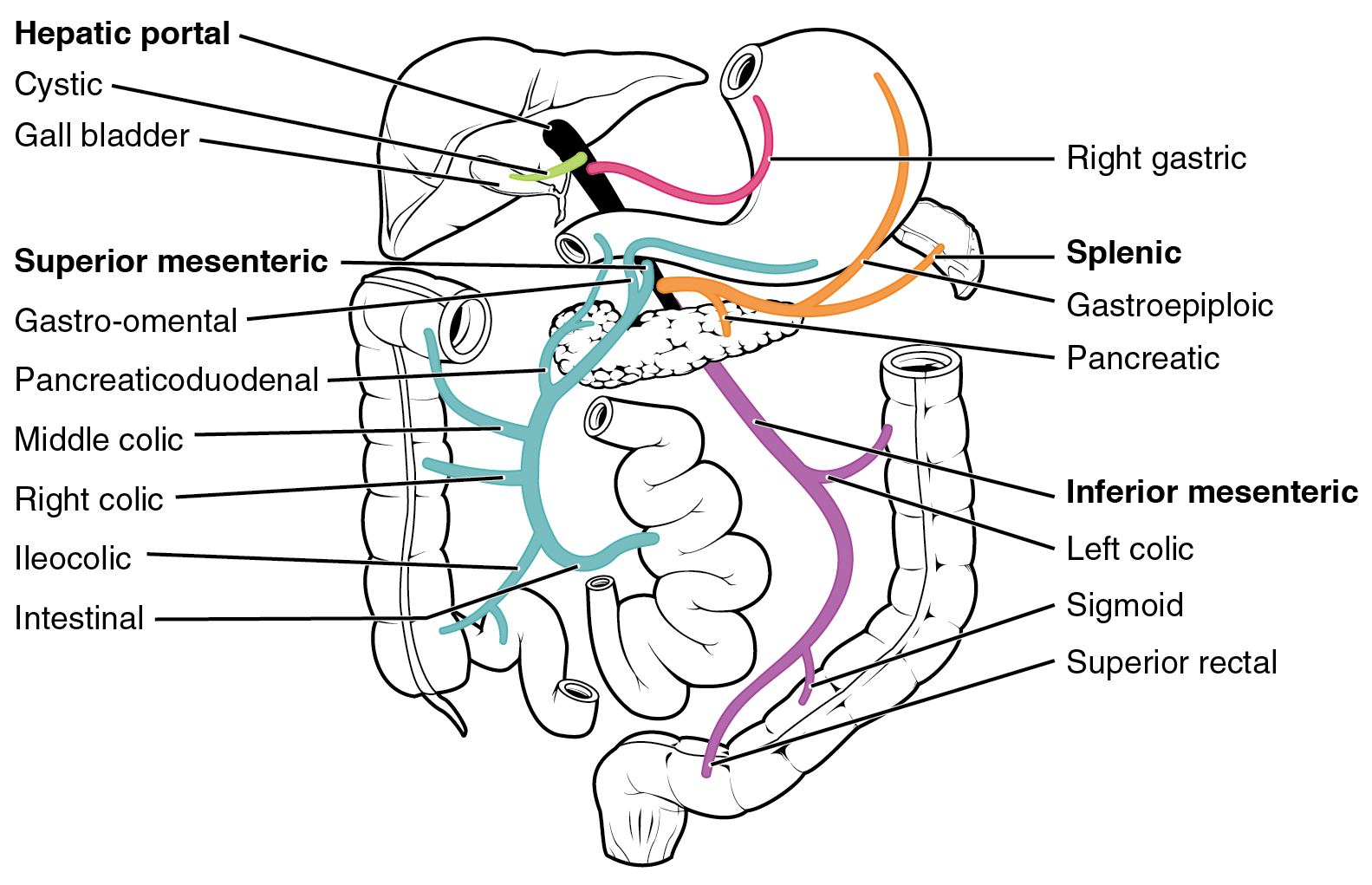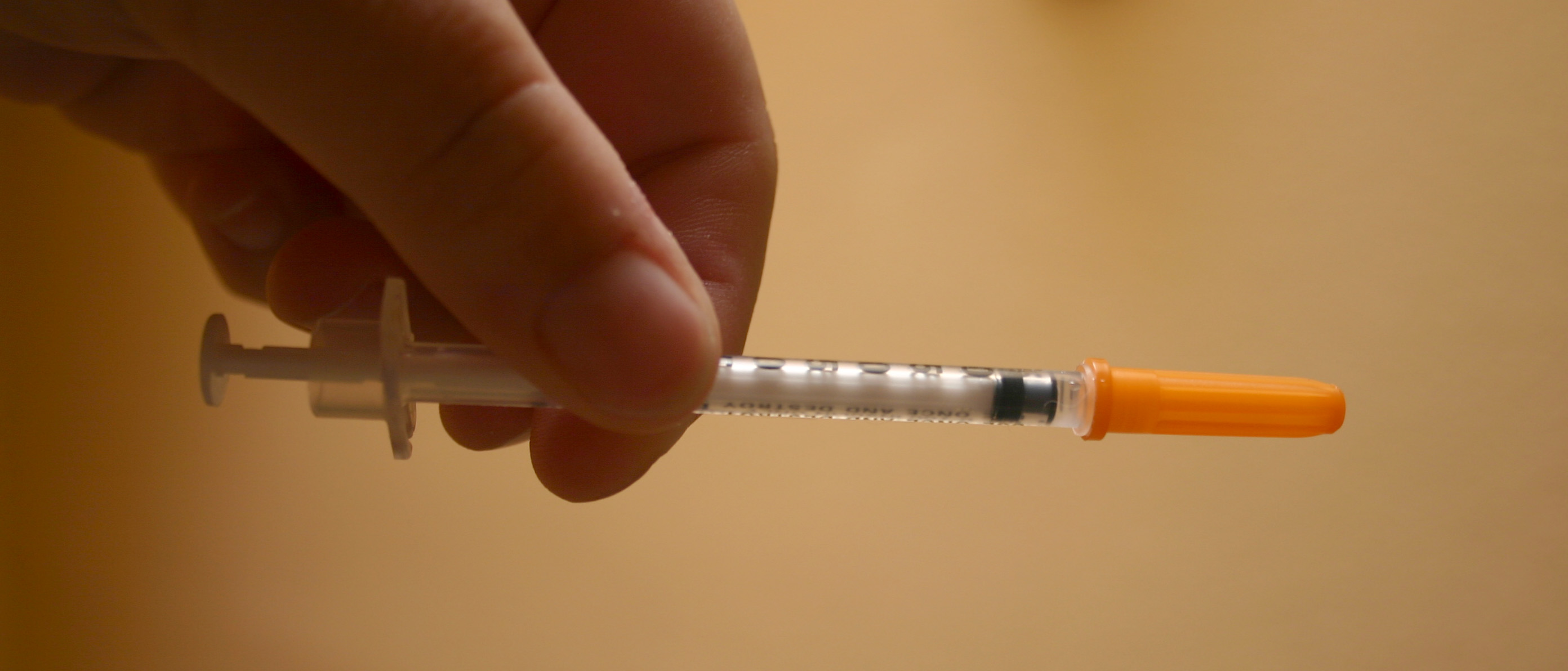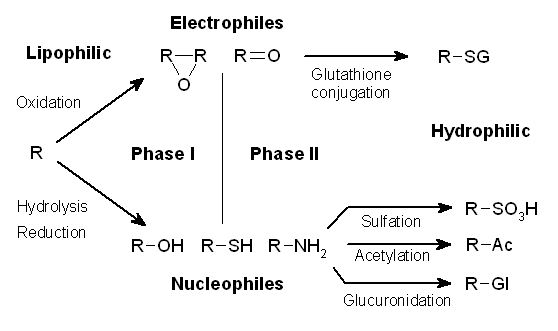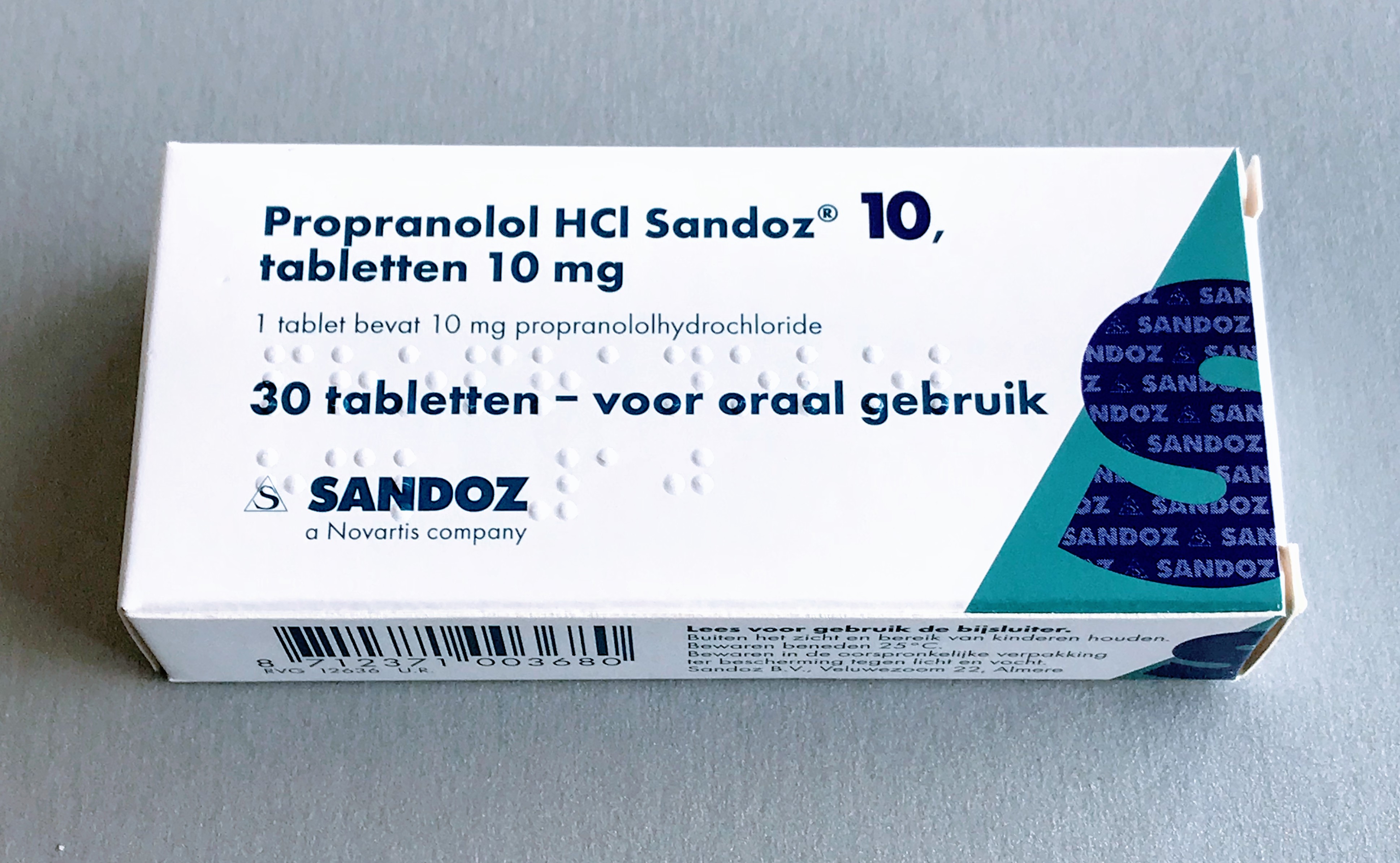|
First Pass Effect
The first pass effect (also known as first-pass metabolism or presystemic metabolism) is a phenomenon of drug metabolism at a specific location in the body which leads to a reduction in the concentration of the active drug before it reaches the site of action or systemic circulation. The effect is most associated with orally administered medications, but some drugs still undergo first-pass metabolism even when delivered via an alternate route (e.g., IV, IM, etc.). During this metabolism, drug is lost during the process of absorption which is generally related to the liver and gut wall. The liver is the major site of first pass effect; however, it can also occur in the lungs, vasculature or other metabolically active tissues in the body. Notable drugs that experience a significant first pass effect are buprenorphine, chlorpromazine, cimetidine, diazepam, ethanol (drinking alcohol), imipramine, insulin, lidocaine, midazolam, morphine, pethidine, propranolol, and tetrahydroca ... [...More Info...] [...Related Items...] OR: [Wikipedia] [Google] [Baidu] |
2138 Hepatic Portal Vein System
138 may refer to: *138 (number) *138 BC *AD 138 *138 (New Jersey bus) *138 Tolosa 138 Tolosa is a brightly coloured, stony background asteroid from the inner region of the asteroid belt. It was discovered by French astronomer Henri Joseph Perrotin on 19 May 1874, and named by the Latin and Occitan name ( and ) of the Frenc ..., a main-belt asteroid * Tatra 138, a heavy truck {{numberdis ... [...More Info...] [...Related Items...] OR: [Wikipedia] [Google] [Baidu] |
Insulin (medication)
As a medication, insulin is any pharmaceutical preparation of the protein hormone insulin that is used to treat high blood glucose. Such conditions include type 1 diabetes, type 2 diabetes, gestational diabetes, and complications of diabetes such as diabetic ketoacidosis and hyperosmolar hyperglycemic states. Insulin is also used along with glucose to treat hyperkalemia (high blood potassium levels). Typically it is given by injection under the skin, but some forms may also be used by injection into a vein or injection into a muscle, muscle. There are various types of insulin, suitable for various time spans. The types are often all called ''insulin'' in the broad word sense, sense, although in a more precise sense, insulin is identical to the naturally occurring molecule whereas insulin analogues have slightly different molecules that allow for modified time of action. It is on the WHO Model List of Essential Medicines, World Health Organization's List of Essential Medicines. ... [...More Info...] [...Related Items...] OR: [Wikipedia] [Google] [Baidu] |
Lumen (anatomy)
In biology, a lumen (: lumina) is the inside space of a tubular structure, such as an artery or intestine. It comes . It can refer to: *the interior of a vessel, such as the central space in an artery, vein or capillary through which blood flows *the interior of the gastrointestinal tract *the pathways of the bronchi in the lungs *the interior of renal tubules and urinary collecting ducts *the pathways of the female genital tract, starting with a single pathway of the vagina, splitting up in two lumina in the uterus, both of which continue through the fallopian tubes *the fluid-filled cavity forming in the blastocyst during pre-implantation development called the blastocoel In cell biology, lumen is a membrane-defined space that is found inside several organelles, cellular components, or structures, including thylakoid, endoplasmic reticulum, Golgi apparatus, lysosome, mitochondrion, and microtubule. Transluminal procedures ''Transluminal procedures'' are procedures occur ... [...More Info...] [...Related Items...] OR: [Wikipedia] [Google] [Baidu] |
Gastrointestinal Tract
The gastrointestinal tract (GI tract, digestive tract, alimentary canal) is the tract or passageway of the Digestion, digestive system that leads from the mouth to the anus. The tract is the largest of the body's systems, after the cardiovascular system. The GI tract contains all the major organ (biology), organs of the digestive system, in humans and other animals, including the esophagus, stomach, and intestines. Food taken in through the mouth is digestion, digested to extract nutrients and absorb energy, and the waste expelled at the anus as feces. ''Gastrointestinal'' is an adjective meaning of or pertaining to the stomach and intestines. Nephrozoa, Most animals have a "through-gut" or complete digestive tract. Exceptions are more primitive ones: sponges have small pores (ostium (sponges), ostia) throughout their body for digestion and a larger dorsal pore (osculum) for excretion, comb jellies have both a ventral mouth and dorsal anal pores, while cnidarians and acoels have ... [...More Info...] [...Related Items...] OR: [Wikipedia] [Google] [Baidu] |
Enzyme
An enzyme () is a protein that acts as a biological catalyst by accelerating chemical reactions. The molecules upon which enzymes may act are called substrate (chemistry), substrates, and the enzyme converts the substrates into different molecules known as product (chemistry), products. Almost all metabolism, metabolic processes in the cell (biology), cell need enzyme catalysis in order to occur at rates fast enough to sustain life. Metabolic pathways depend upon enzymes to catalyze individual steps. The study of enzymes is called ''enzymology'' and the field of pseudoenzyme, pseudoenzyme analysis recognizes that during evolution, some enzymes have lost the ability to carry out biological catalysis, which is often reflected in their amino acid sequences and unusual 'pseudocatalytic' properties. Enzymes are known to catalyze more than 5,000 biochemical reaction types. Other biocatalysts include Ribozyme, catalytic RNA molecules, also called ribozymes. They are sometimes descr ... [...More Info...] [...Related Items...] OR: [Wikipedia] [Google] [Baidu] |
Insulin
Insulin (, from Latin ''insula'', 'island') is a peptide hormone produced by beta cells of the pancreatic islets encoded in humans by the insulin (''INS)'' gene. It is the main Anabolism, anabolic hormone of the body. It regulates the metabolism of carbohydrates, fats, and protein by promoting the absorption of glucose from the blood into cells of the liver, fat cell, fat, and skeletal muscles. In these tissues the absorbed glucose is converted into either glycogen, via glycogenesis, or Fatty acid metabolism#Glycolytic end products are used in the conversion of carbohydrates into fatty acids, fats (triglycerides), via lipogenesis; in the liver, glucose is converted into both. Glucose production and secretion by the liver are strongly inhibited by high concentrations of insulin in the blood. Circulating insulin also affects the synthesis of proteins in a wide variety of tissues. It is thus an anabolic hormone, promoting the conversion of small molecules in the blood into large ... [...More Info...] [...Related Items...] OR: [Wikipedia] [Google] [Baidu] |
Benzylpenicillin
Benzylpenicillin, also known as penicillin G (PenG) or BENPEN, is an antibiotic used to treat a number of bacterial infections. This includes pneumonia, strep throat, syphilis, necrotizing enterocolitis, diphtheria, gas gangrene, leptospirosis, cellulitis, and tetanus. It is not a first-line agent for pneumococcal meningitis. Due to benzylpenicillin's limited bioavailability for oral medications, it is generally taken as an injection in the form of a sodium, potassium, benzathine, or procaine salt. Benzylpenicillin is given by injection into a vein or muscle. Two long-acting forms benzathine benzylpenicillin and procaine benzylpenicillin are available for use by injection into a muscle only. Side effects include diarrhea, seizures, and allergic reactions including anaphylaxis. When used to treat syphilis or Lyme disease a reaction known as Jarisch–Herxheimer may occur. It is not recommended in those with a history of penicillin allergy. Use during pregnancy is gene ... [...More Info...] [...Related Items...] OR: [Wikipedia] [Google] [Baidu] |
Clomethiazole
Clomethiazole (also called chlormethiazole) is a sedative and hypnotic originally developed by Hoffmann-La Roche in the 1930s. The drug is typically used in treating and preventing symptoms of acute alcohol withdrawal, anxiety and as a sedative-hypnotic. It is structurally related to thiamine (vitamin B1), but acts like a sedative, hypnotic, anxiolytic, muscle relaxant and anticonvulsant, having the same mechanism of action as traditional barbiturates. It is also used for the management of agitation, restlessness, and Parkinson's disease. In the UK, it is sold under the brand Heminevrin ( AstraZeneca Pharmaceuticals). Other brand names include Nevrin in Romania, Distraneurin in Germany and Distraneurine in Spain. The drug is marketed either as a free base in an oily solution containing 192 mg in capsule form, or as clomethiazole edisylate syrup. Due to its high toxicity compared to benzodiazepines it is not recommended as a first-line treatment for any indication and is ... [...More Info...] [...Related Items...] OR: [Wikipedia] [Google] [Baidu] |
Phase I Metabolism
Drug metabolism is the metabolic breakdown of drugs by living organisms, usually through specialized enzymatic systems. More generally, xenobiotic metabolism (from the Greek xenos "stranger" and biotic "related to living beings") is the set of metabolic pathways that modify the chemical structure of xenobiotics, which are compounds foreign to an organism's normal biochemistry, such as any drug or poison. These pathways are a form of biotransformation present in all major groups of organisms and are considered to be of ancient origin. These reactions often act to detoxify poisonous compounds (although in some cases the intermediates in xenobiotic metabolism can themselves cause toxic effects). The study of drug metabolism is the object of pharmacokinetics. Metabolism is one of the stages (see ADME) of the drug's transit through the body that involves the breakdown of the drug so that it can be excreted by the body. The metabolism of pharmaceutical drugs is an important aspect ... [...More Info...] [...Related Items...] OR: [Wikipedia] [Google] [Baidu] |
Tetrahydrocannabinol
Tetrahydrocannabinol (THC) is a cannabinoid found in cannabis. It is the principal psychoactive constituent of ''Cannabis'' and one of at least 113 total cannabinoids identified on the plant. Although the chemical formula for THC (C21H30O2) describes multiple isomers, the term ''THC'' usually refers to the delta-9-THC isomer with chemical name (−)-''trans''-Δ9-tetrahydrocannabinol. It is a colorless oil. Medical uses THC, referred to as dronabinol in the pharmaceutical context, is approved in the United States as a capsule or solution to relieve chemotherapy-induced nausea and vomiting and HIV/AIDS-induced anorexia. THC is an active ingredient in nabiximols, a specific extract of ''Cannabis'' that was approved as a botanical drug in the United Kingdom in 2010 as a mouth spray for people with multiple sclerosis to alleviate neuropathic pain, spasticity, overactive bladder, and other symptoms. Nabiximols (as Sativex) is available as a prescription drug in Canada. In 20 ... [...More Info...] [...Related Items...] OR: [Wikipedia] [Google] [Baidu] |
Propranolol
Propranolol is a medication of the beta blocker class. It is used to treat hypertension, high blood pressure, some types of cardiac dysrhythmia, irregular heart rate, thyrotoxicosis, capillary hemangiomas, akathisia, performance anxiety, and essential tremors, as well to prevent migraine headaches, and to prevent further heart problems in those with angina or previous myocardial infarction, heart attacks. It can be taken oral administration, orally or by intravenous injection. The formulation that is taken orally comes in short-acting and long-acting versions. Propranolol appears in the blood after 30 minutes and has a maximum effect between 60 and 90 minutes when taken orally. Common side effects include nausea, abdominal pain, and constipation. It may worsen the symptoms of asthma. Propranolol may cause teratogen, harmful effects for the baby if taken during pregnancy; however, its use during breastfeeding is generally considered to be safe. It is a non-selective beta block ... [...More Info...] [...Related Items...] OR: [Wikipedia] [Google] [Baidu] |
Pethidine
Pethidine, also known as meperidine and sold under the brand name Demerol among others, is a fully synthetic opioid pain medication of the phenylpiperidine class. Synthesized in 1938 as a potential anticholinergic agent by the German chemist Otto Eisleb, its analgesic properties were first recognized by Otto Schaumann while working for IG Farben, in Germany. Pethidine is the prototype of a large family of analgesics including the pethidine 4-phenylpiperidines (e.g., piminodine, anileridine), the prodines (e.g., alphaprodine, MPPP), bemidones (e.g., ketobemidone), and others more distant, including diphenoxylate and analogues. Pethidine is indicated for the treatment of moderate to severe pain, and is delivered as a hydrochloride salt in tablets, as a syrup, or by intramuscular, subcutaneous, or intravenous injection. For much of the 20th century, pethidine was the opioid of choice for many physicians; in 1975, 60% of doctors prescribed it for acute pain and 22% for chroni ... [...More Info...] [...Related Items...] OR: [Wikipedia] [Google] [Baidu] |






